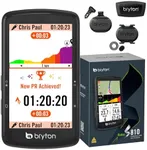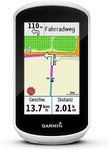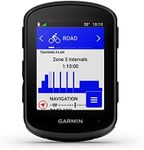Buying Guide for the Best Bicycle Computers
Choosing the right bicycle computer can enhance your cycling experience by providing valuable data and insights into your rides. Whether you're a casual rider or a serious cyclist, a bicycle computer can help you track your performance, navigate routes, and stay connected. To find the best fit for you, consider what features are most important based on your cycling habits and goals. Here are some key specifications to consider when selecting a bicycle computer.Display Size and TypeThe display size and type of a bicycle computer determine how easily you can read the information while riding. Larger displays are easier to read at a glance, which is important for safety and convenience, especially during high-speed rides. Displays can be segmented into small (less than 2 inches), medium (2-3 inches), and large (over 3 inches). If you prefer a compact setup, a smaller display might be sufficient, but if you want to view multiple data fields simultaneously, a larger display is beneficial. Consider your eyesight and the amount of data you want visible when choosing the display size.
GPS FunctionalityGPS functionality in a bicycle computer allows you to track your route, speed, and distance with high accuracy. This is crucial for navigation and performance tracking. Some models offer basic GPS for route tracking, while others provide advanced features like turn-by-turn navigation and mapping. If you often explore new routes or participate in long-distance rides, a computer with advanced GPS features will be beneficial. For casual riders who stick to familiar paths, basic GPS might suffice.
ConnectivityConnectivity options, such as Bluetooth and ANT+, enable your bicycle computer to sync with other devices like smartphones, heart rate monitors, and power meters. This is important for cyclists who want to analyze their performance data or receive notifications while riding. Connectivity can be basic, allowing simple data transfer, or advanced, supporting multiple device connections and app integrations. If you use additional sensors or want to stay connected to your phone, look for a model with robust connectivity features.
Battery LifeBattery life determines how long your bicycle computer can operate before needing a recharge. This is crucial for long rides or multi-day trips. Battery life can range from a few hours to several weeks, depending on the model and usage. Shorter battery life might be acceptable for short, frequent rides, but for long-distance touring or endurance events, a longer battery life is essential. Consider how often you ride and the duration of your typical rides when evaluating battery life.
Data Tracking FeaturesData tracking features include the ability to monitor speed, distance, cadence, heart rate, and more. These features are important for cyclists who want to improve their performance or track their fitness progress. Basic models may only track speed and distance, while advanced models offer comprehensive data tracking, including power output and elevation. If you're training for an event or focused on fitness, opt for a model with extensive data tracking capabilities. For casual riders, basic tracking might be sufficient.
Durability and Weather ResistanceDurability and weather resistance ensure that your bicycle computer can withstand the elements and rough handling. This is important for cyclists who ride in various weather conditions or on rugged terrain. Some models are water-resistant, while others are fully waterproof and shockproof. If you frequently ride in rain or on challenging trails, choose a model with high durability and weather resistance. For fair-weather riders, basic protection might be adequate.


















